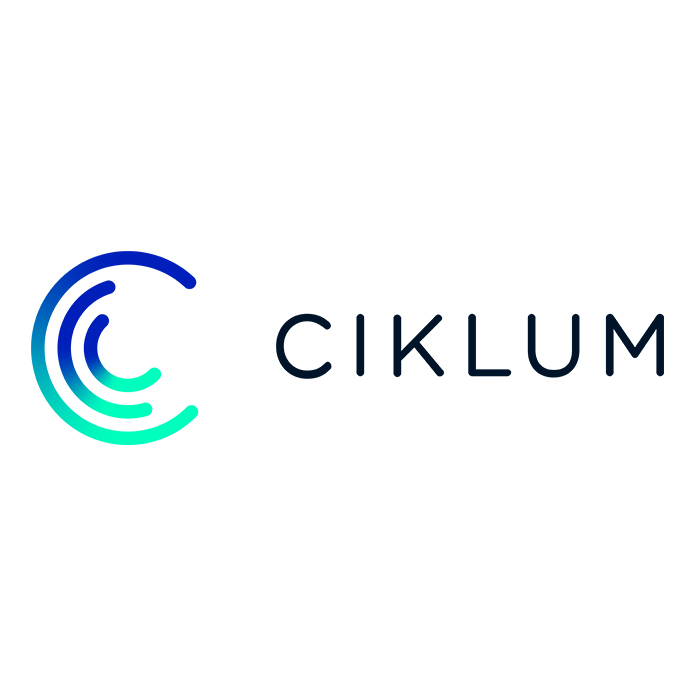Key Takeaways:
- Web 5.0 technology will gradually make waves in the years to come
- The blockchain will power new levels of decentralization
- Regulation, security and data ownership will all be top priorities
- Expert support will be vital to maximize opportunities
Web 5.0: The Next Evolution in Internet Technology
Web 5.0 represents the next generation of the internet. Utilizing the blockchain and the wider concept of decentralization, it will hand more control and autonomy to individual users around their data and identities. What’s more, it will add new levels of intelligence to internet experiences, making interactions more emotion and human-driven.
Web 5.0 is still in its development state, but it’s important to understand its potential now to take full advantage in the future. This blog explores Web 5.0 in detail.
The Internet Evolution Journey to Web 5.0
The path through the five generations of the Internet has been fascinating to follow. The first generation offered static, read-only pages, before Web 2.0 enabled more interactivity through user-generated content and the advent of social media. Web 3.0 is known as the semantic web by introducing decentralization and data interoperability, before Web 4.0 brought in wider artificial intelligence, the Internet of Things and virtual reality.
Web 5.0 will take the technologies of Web 4.0 forward, and enable more user-focused internet experiences. The likes of generative AI and VR will be refined, enhanced and integrated to support more emotional intelligence, with decentralization and transparency front-and-center.
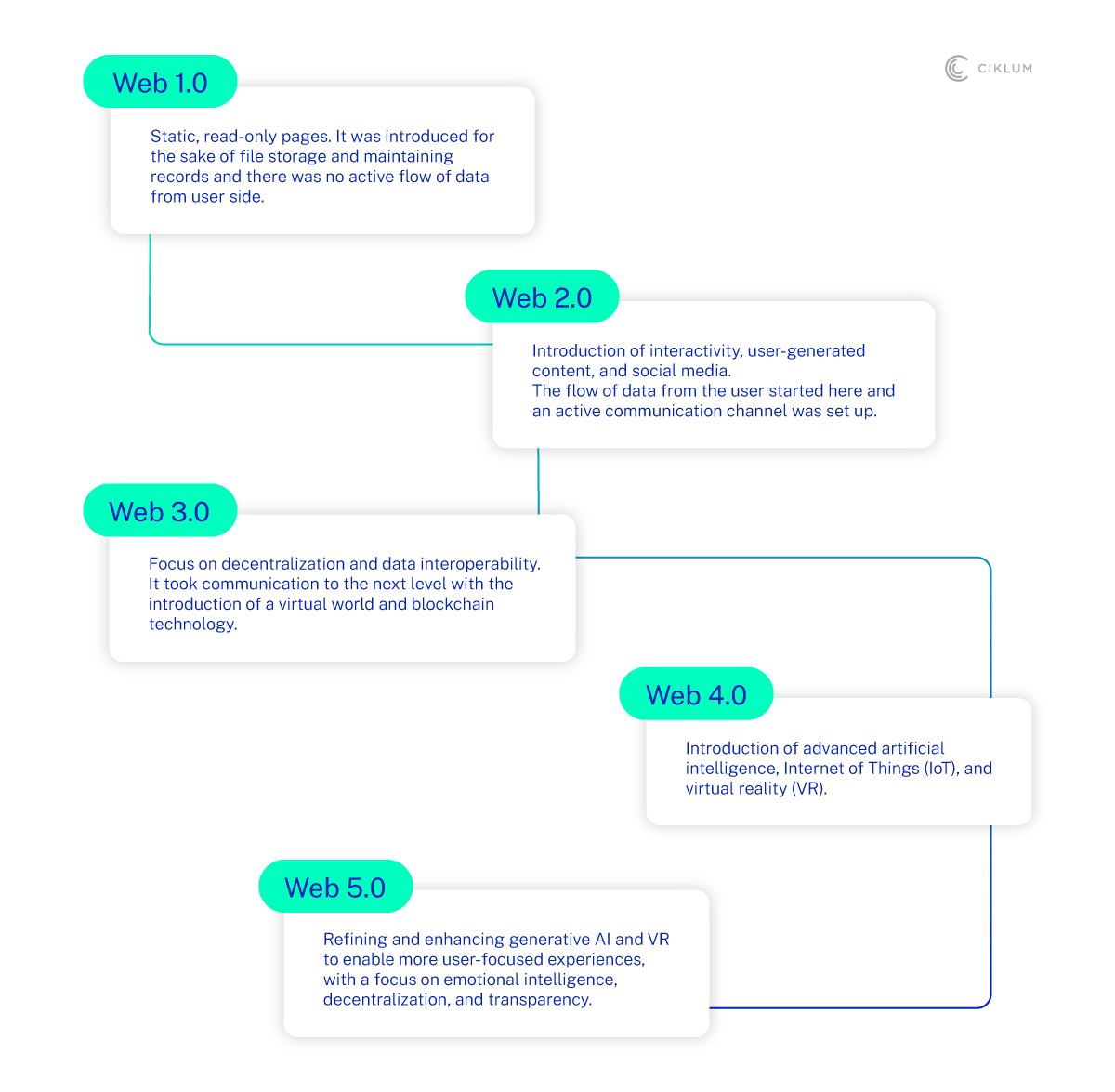
Core Features and Aspects of Web 5.0
While Web 5.0 consists of several different technologies and capabilities, there are ultimately four key principles behind it:
Decentralization and Data Ownership
Control and ownership of user data is increasingly important to the public. According to Norton, 85% of adults worldwide want to do more to maintain their privacy online. Web 5.0 will enable this by handing the ownership and complete control of data to individual users. Developers will be able to build completely decentralized web applications that leverage data on this basis, while the distribution of data across multiple locations reduces the risk of a security breach affecting thousands or millions of people.
Enhanced Interconnectivity
Web 5.0 will have the capability to enable seamless media connections, bringing together the social interactions and user control that have been a feature of the generations before it. Users all over the world will be able to converse with each other and interact with content better than ever before, with data transparency maintained throughout.
Semantic Enhancements
Advances in semantic technologies in Web 5.0 will help refine the accessibility and comprehension of the information available online. For example, machine learning algorithms can drive insights from unstructured data, and expand their capabilities over time through self-learning and self-optimization. Combined with AI and Natural Language Processing, this will ultimately allow users to make more detailed queries, and receive more intelligent, relevant outputs.
Identity and Security
In a climate of increased awareness about security online, the blockchain technology around Web 5.0 will enable users and businesses to keep personal data safe from the threat of cybercrime. As well as decentralization, users will also be able to benefit from cryptographic security, so that the risk of unauthorized access to data, or the loss of it, can be minimized.

Potential Applications and Impact of Web 5.0
It will still be some time until all of the best use cases for Web 5.0 are widely known and understood. However, several industries already have potential to be transformed by this next generation, such as:
 Finance
Finance
Populations that find online banking access difficult, such as remote communities, may be able to access digital finance services more easily thanks to the decentralization of their data.
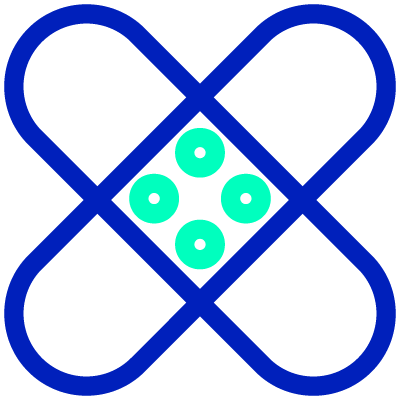 Healthcare
Healthcare
Doctors could provide care in real time to patients, wherever they are in the world, through telemedicine and easy access to patient information.
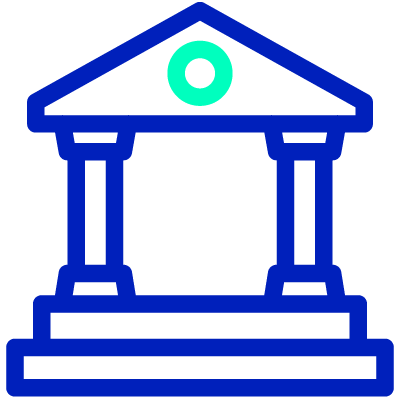 Education
Education
Lessons, study plans and content could be tailored to individual classes and students, while they could also access interactive experiences supported by VR.
The one thing these three use cases have in common is that data transparency and user engagement are key to all of them. That’s why these issues will need to be addressed at the start of any Web 5.0 project.
Challenges and Considerations around Web 5.0
In order to realize the full potential of Web 5.0, there will be several complexities and challenges to negotiate. Exactly how they will manifest themselves is currently unclear, because Web 5.0 technology is still being developed. However, in the months and years ahead, we recommend keeping a close eye out for some or all of the following:
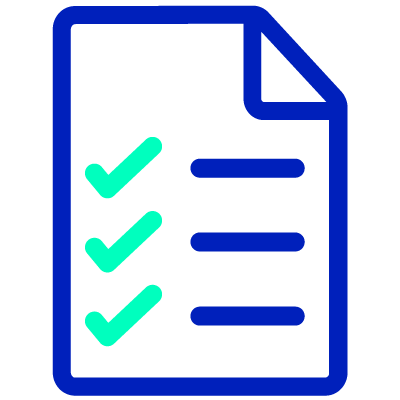 Regulation
Regulation
With more stakeholders becoming involved in a decentralized environment, effective regulation of who can access what and how, will play an important part in defining Web 5.0 in practice.
 Adoption cost
Adoption cost
Related to the previous point, the cost of adopting Web 5.0 innovations may be high, with many people priced out of the technology at least initially.
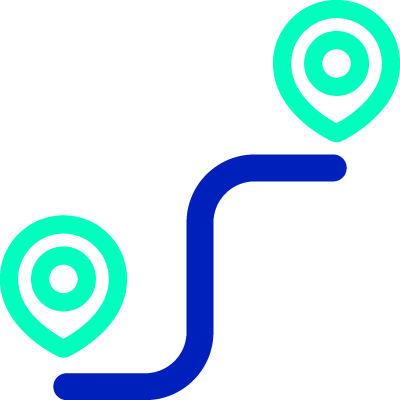 Roadmapping
Roadmapping
With the technology still emerging, putting together long-term strategic roadmaps may be challenging without expert insight and support.
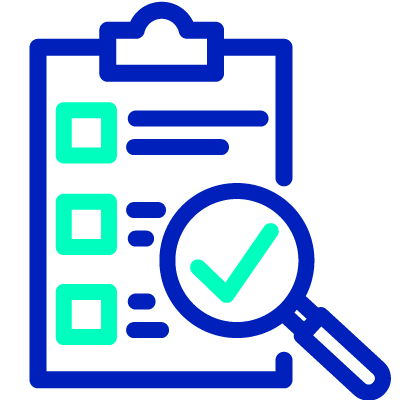 Responsibility
Responsibility
These roadmaps will need to clarify the operational considerations such as control and legal responsibility.
In Summary: The Future of Digital Rights
As Web 5.0 becomes more prevalent around the world, it will likely lead to major changes in attitudes around digital rights and ownership. Decentralization means that users will have control and ownership of their digital identities thanks to the combination of three technologies: Verifiable Credentials, Decentralized Web Nodes, and Decentralized Identifiers.
The knock-on result of this shift is that businesses will have to change their approaches around how they use, process and store data, especially if they utilize or offer AI-based services. It’s for this reason that working with an expert AI partner with a wealth of expertise in data and AI for Web 5.0 will be vital for long-term success.
Blogs






























